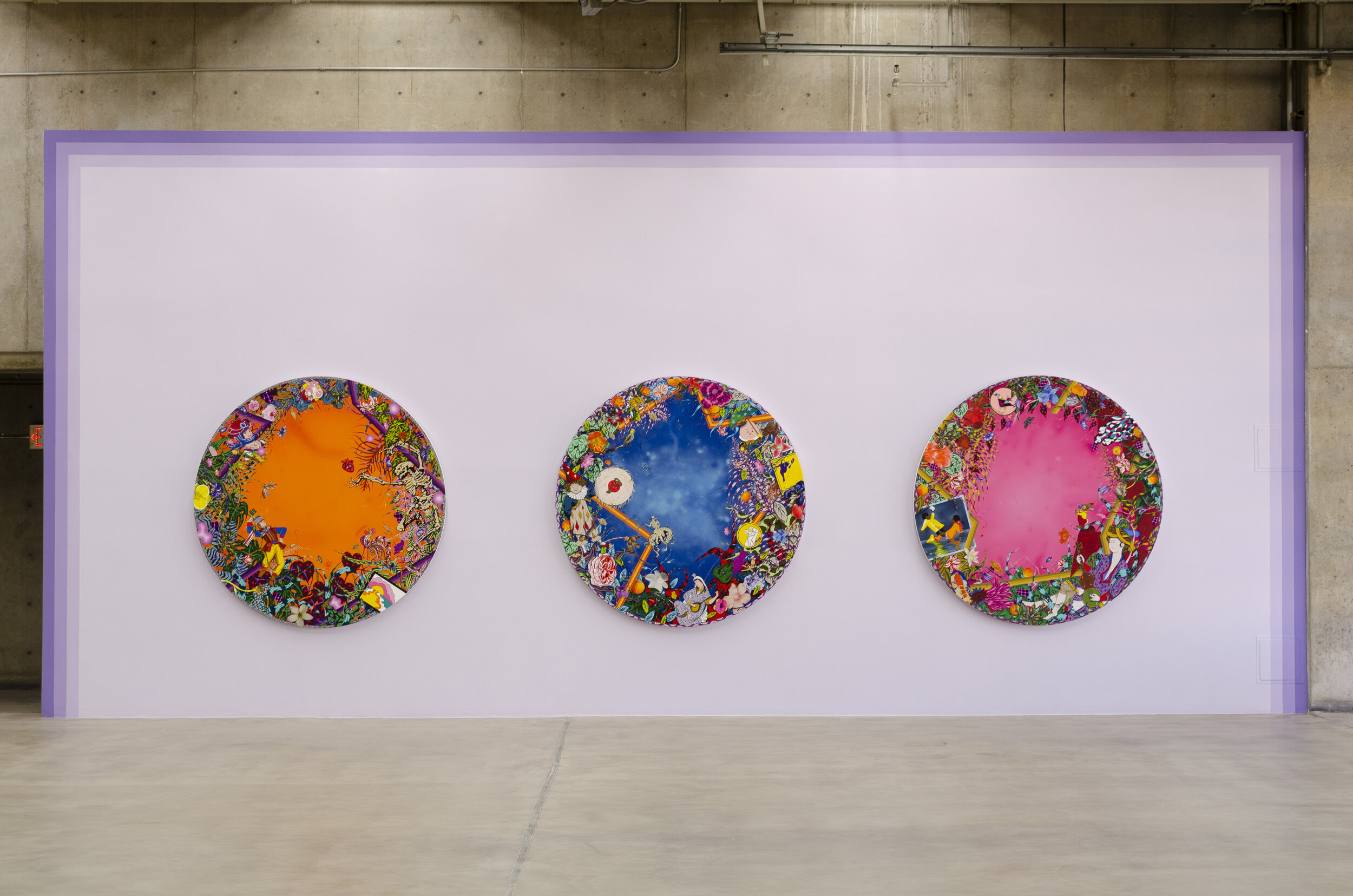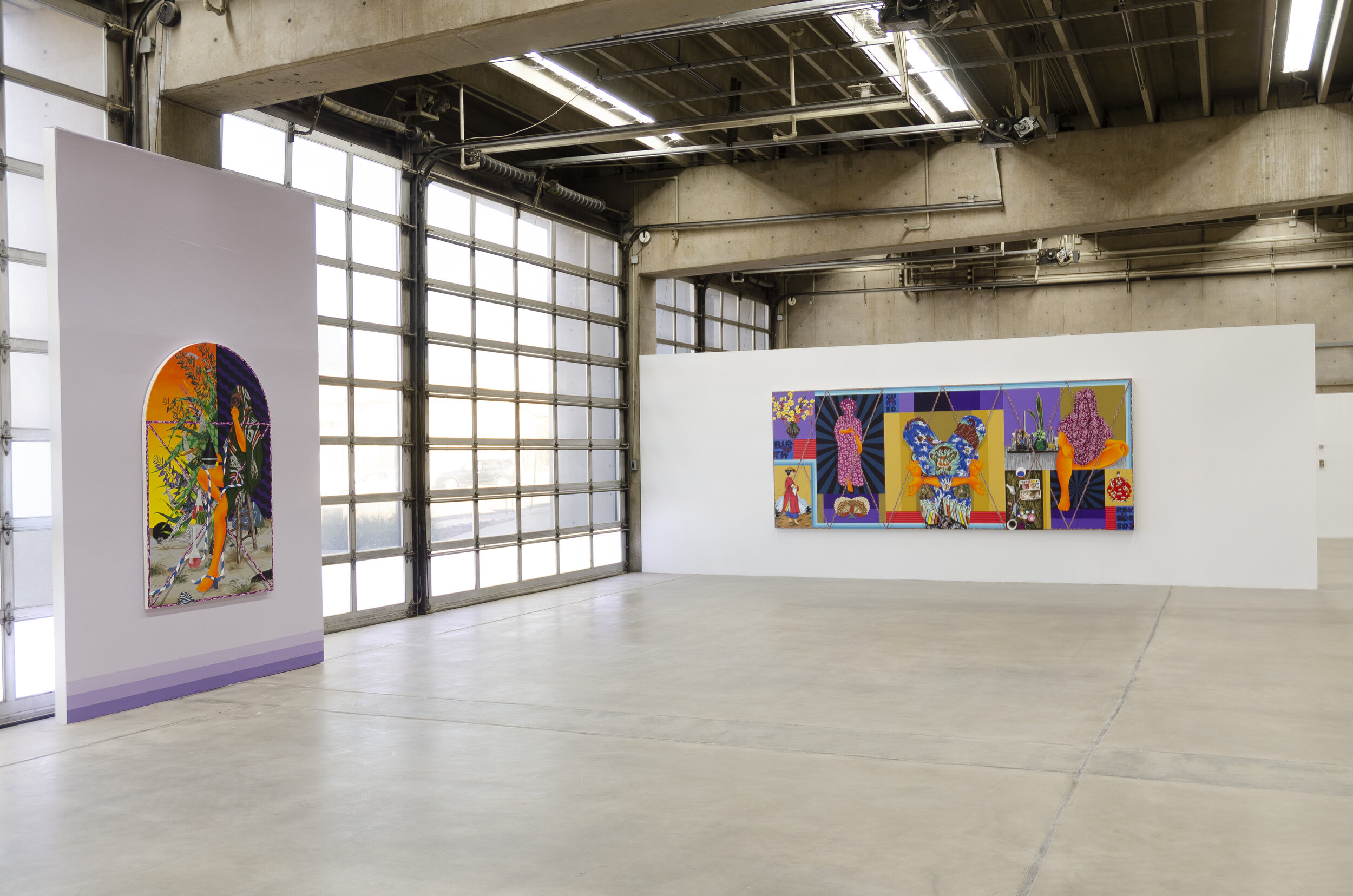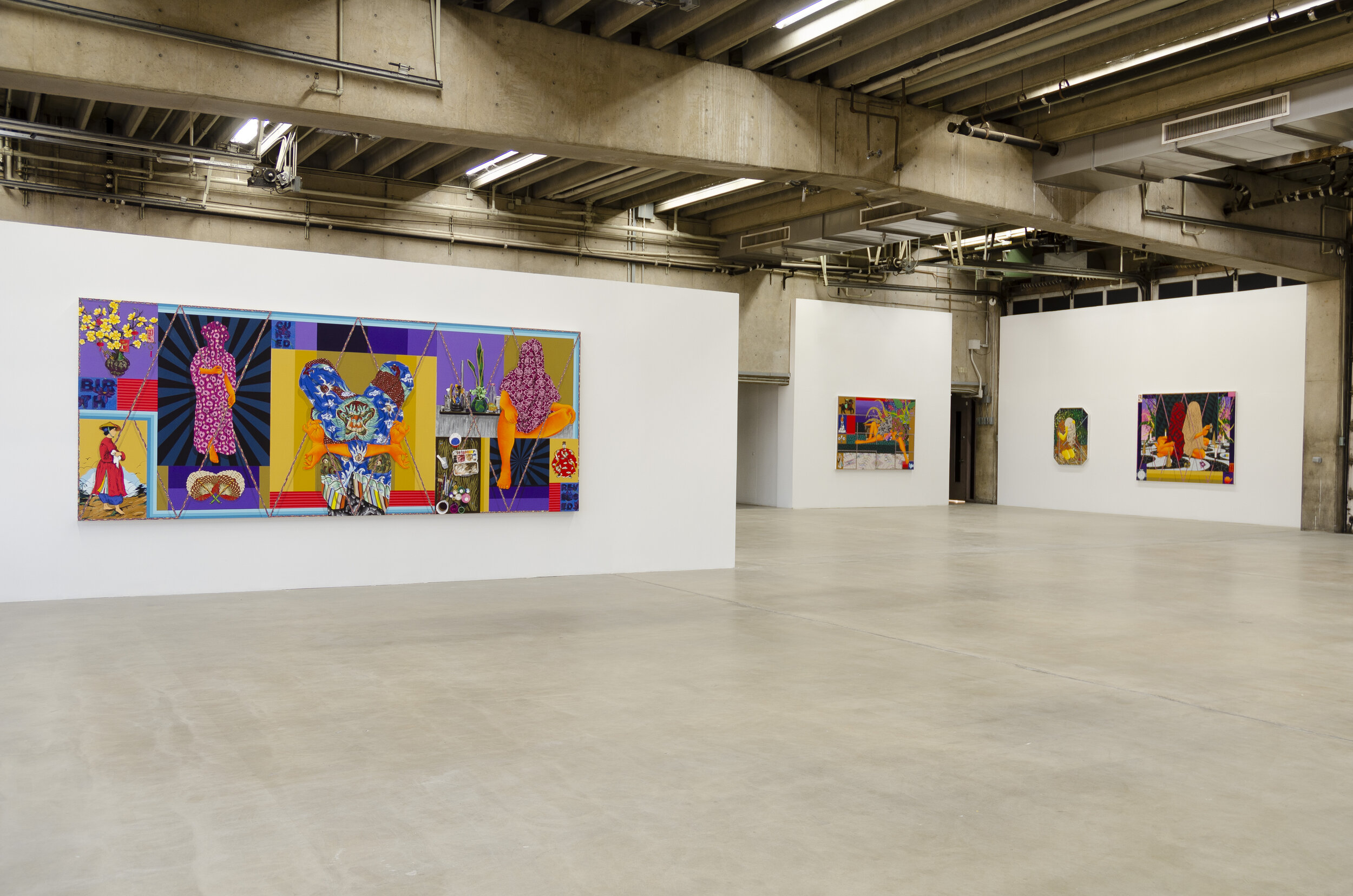Amir H. Fallah - A Cultural Hybrid in the time of Covid-19
Thank you to Amir H. Fallah for this illuminating conversation. I’ve long admired his work from afar, despite rarely having the chance to see much in person, except at a few fairs. Fallah presents identity in a unique manner, revealing his subjects through vibrant and kaleidoscopic portrayals of personal history, intimate objects and character traits. The recurring veiled figures in Fallah’s paintings subvert expectations of both portraiture and genre painting, forcing the viewer the reconsider their own way of seeing and understanding paintings.
Amir H. Fallah (b. 1979, Tehran) received his BFA in Fine Art & Painting at the Maryland Institute College of Art in 2001 and his MFA in Painting at the University of California, Los Angeles in 2005. He has exhibited extensively in solo and group exhibitions across the United States and abroad, including solo presentations at the Schneider Museum, Ashland (2017); the San Diego Art Institute (2017); the Nerman Museum of Contemporary Art, Overland (2015); Denny Dimin Gallery (2016); Shulamit Nazarian (2018, 2016) and The Third Line, Dubai (2017, 2013, 2009, 2007, 2005). Fallah received the CCF Grant (2017), the Joan Mitchell Foundation Painters and Sculptors Grant (2015), and was selected to participate in the 9th Sharjah Biennial.
Fallah has artwork in the collections of the Perez Art Museum Miami, Smart Museum of Art, Chicago the Nerman Museum of Contemporary Art, Kansas City and the Microsoft Collection among others.
Amir H. Fallah. Photo courtesy of Shayan Asgharnia
LS: What are your motivations as an artist? What compelled you to take this path in the beginning? Over time, how has your definition of why you’re an artist developed?
AF: I got into art around the age of 13. From an early age, I had the desire to be great at something. There was always this drive to learn something and push it as far as I could go. Initially, I fell in love with skateboarding and although I tried I soon realized I wasn’t going to be the next Tony Hawk. Through skateboarding I discovered graffiti and after winning a poster contest in middle school I started taking art more seriously. It sounds so simple but that small poster contest gave me just enough positive encouragement to dedicate myself to art. About a year later I decided to pursue art seriously.
In the beginning, it was more of an exploration of formal concerns but once I got into art school I started thinking about the meaning of work, as well as how one can add to the canon of art history. I don’t think too much about why I am an artist. At this point making art is second nature. It’s something I’m consumed by. I wake up thinking about art and go to sleep dreaming about it. It’s an essential part of my life and I can’t imagine doing anything else.
LS: That’s an interesting path, to see creative impulses intertwined with ambition. Has this drive helped you make any important decisions during pivotal moments in your career?
AF: Being stubborn and ambitious can help career-wise I suppose. There were many years when nobody cared about what I was doing. Frankly, I wasn’t making very good work and as a result, not many people paid attention. I never thought that I was a bad artist. I always thought that I just hadn’t made a good painting yet. I kept working and working. One year I made a series of large paintings and after 6 months of working on them, I destroyed them. They weren’t very good but I learned a lot by making them. Shortly thereafter I started making the paintings that would lead to what I’m making now which for me was a major breakthrough.
Amir H. Fallah, Birth, Cursed, Reversed, 2019, Acrylic on canvas, 72 x 180 inches. Courtesy of Shulamit Nazarian, Los Angeles
LS: In times of the crisis, what is the role of the artist? How has that shaped or changed your practice in the last month?
AF: About a year and a half ago I started making work about life lessons or parables that I wanted to pass on to my four year old son. I imagined what would happen if my wife and I died tomorrow. What would we leave behind to guide our son through his life? Becoming a parent has completely changed my life and made me see the world in a new way. I first thought of this body of work when I was reading stories to my son. I read several stories to him every night and noticed that children’s books are a way parents try to instill their values or beliefs in their children. After Trump got elected my wife purchased several children’s books about the importance of voting. Who knew such a thing existed? These new paintings mix text and imagery from children books and other sources to create works that are stand-ins for my family’s beliefs and values. Environmental, political, and spiritual ideas are addressed. I didn’t know it at the time of inception but these works are more relevant than ever. One of the largest paintings in the series is titled “Science Is the Antidote, Superstition is the Disease.” I can’t think of a more relevant painting for what we’re dealing with today.
I’m not sure how art can push these ideas forward. Sometimes it feels like preaching to the converted but for me, it’s not so much about changing someone's mind as it is a record of how I felt about the world around me and my place in it.
LS: Much of your work reconsiders the practice of portrait painting. In lieu of emotionally driven studies of physiognomy, veiled figures pose in scenes of confounding perspective, surrounded by objects dear to them. How does this mis-en-place reveal the likeness of the sitter differently from a traditional portrait?
AF: When I first began making this work I thought about how portraits throughout history were misleading. They are a superficial read of who someone is and historically who someone wants you to think they are. I wanted to create a new way of describing someone. Not by their physical appearance but via the objects that they surround themselves with. These objects are personal mementos, historical heirlooms and the mundane debris of life that we all live with. They function as a coded group of symbols that describe who the person is. I want to turn the history of portraits on its head, to deconstruct it and push what could be considered a portrait.
The veiling of the figures was simply a means to an end. How do you cover the physical appearance of someone? By throwing something over their head. A lot of people assume the paintings are all about Muslim women or Islam but that’s their personal baggage that they are bringing to the work, not mine. The paintings are of men, women, young, old, and of every nationality.
Amir H. Fallah, The People Of Rich Port, 2019, Acrylic on canvas, 48 x 72 inches. Courtesy of Dio Horia Gallery, Athens, Greece
LS: To me, a veil is a form of a mask, obscuring the identity of the sitter. How do you balance the tension between the veil as a form of protection through anonymity and as a means of silencing and marginalizing individuality?
AF: I don’t think of it in those terms at all. For me how everyone dresses is a veil in a sense. We all dress the part of who we desire to be. Some of us are faking it, some of us aren’t but at the end of the day, we dress to communicate messages. A three-piece suit sends a very specific message as does a ragged pair of sweats with stains all over it.
LS: I’m always fascinated when different analyses are divergent, this is one of the most alluring aspects of art. So any relation to the hijab is incidental in these paintings?
AF: Yes, initially it was sheer coincidence. I wasn’t thinking about veiling at all. I was thinking more about the history of western abstraction. But over time new ideas crept into the work. For instance, in a lot of Islamic art, they don’t show the face of the prophets. I don’t reference this directly but it is on my mind as I make new work. Perhaps it works its way in subconsciously.
Amir H. Fallah, Delusion And Confusion, 2019, Acrylic on Canvas, 60 x 84 inches. Courtesy of Denny Dimin Gallery, NYC
LS: Many of your subjects are shown in moments of repose, while many of the group portraits portray tenderness and support. Without facial features, body language is paramount. How do you use it in your paintings?
AF: Every painting starts with a photoshoot with the subjects. A lot of the poses are spontaneous and are a response to the sitter’s home, objects, and what space we have to work with. Some seem like historical poses but they are never based on any specific piece. Rather they pull from both historical and contemporary art history as well as anything else that I’m exposed to. I might see a model on a billboard and that may influence the photoshoot. I try to keep the photoshoots free of planning as the idea of chance is important to me. I go into the sitter’s home like an archaeologist, digging into their personal history to unearth meaning.
LS: Are any of your works self-portraits, or directly biographical? What stories do they tell?
AF: Yes, I’ve made several portraits of myself. One was a stained glass window that was part of a larger installation that told the story of my family's journey from Iran to America. I’m not sure if I dealt with the self-portraits in a different manner than the portraits of others. However, the new body of work I’m creating with children's books is also a self-portrait of sorts even though they don’t depict veiled figures. At this point I’m not sure if a portrait even has to have a figure in it.
Amir H. Fallah, Offering, 2018, stained glass, fused glass, custom LED light panel, lead, Custom aluminum frame, Edition of 3 with 1AP, 48 5/8 x 35 inches. Courtesy of Shulamit Nazarian, Los Angeles
LS: America’s recent political history with Iran has instilled in many an image of desert expanse. Are the lush botanicals and rich interiors that you surround your subjects with an attempt to subvert this expectation?
AF: I was born in 1979 during the Iranian revolution so America and Iran have been at odds my entire life. I never thought of the botanicals in those terms. Instead they are about the chaos of life. The plant life in all those works are from all over the world. Tropical plants live among desert succulents and cacti. They are colliding, combining, and creating hybrids. I suppose this could be seen as a metaphor for my personal experience. In a sense my entire life is about being a hybrid. I’m a cultural hybrid in every way. My wife is Puerto Rican and now we have an Iranian/Puerto Rican child who looks like a typical white kid from any American town. He is the embodiment of what it is to be American.
LS: Fascinating. I think that last statement about your son is very powerful, and I couldn’t agree more. It brings me back to the idea of the veil, and how our natural physical appearance - skin tone, facial characteristics, etc. can be so misleading in the way others see our identity. In your paintings, the veil removes the physical qualifier, allowing your subject’s unique personal history and interests to be at the forefront of their identity.
AF: Exactly. That’s how I see it. I also generalize the body and always make the skin color a yellowish-orange color. The skin color feels vibrant and alive but it isn’t any one race.
Amir H. Fallah, Calling On The Past, 2018, Acrylic on canvas, 60 x 48 inches. Courtesy of Shulamit Nazarian, Los Angeles
Amir H. Fallah, They Are Out There, 2019, Acrylic on canvas, 48 x 36 inches. Courtesy of Shulamit Nazarian Gallery
LS: A major museum exhibition of your work Scatter my ashes on foreign lands opened in January at the MOCA Tuscon and would still be on view today. For the first time, this exhibition traces your development over the past decade. What did you learn from revisiting your work in this manner? What new questions to explore came out of this process?
AF: So often artists hit a creative wall and give up on an idea. I had done that with so many previous bodies of work. When I first started making this work 10 years ago I promised myself that I would go slow and keep building on the work thematically. It was great to see how the work had evolved. It looked consistent but you could see the jumps both formally and conceptually in the work year to year.
The title of this exhibition was interesting because the show opened just a few days before the Iran/American standoff in January. Again the title was planned over a year ahead but somehow fit perfectly with what was happening in the world. It felt perfect, highlighting what it feels like to be in a constant state of limbo between two cultures, and two worlds at odds with one another 40 years and counting.




LS: That must be a very rewarding feeling, to look back and be pleased with your development. What’s coming next for you?
AF: Well as with every other artist in the world my schedule is in complete limbo. I was supposed to debut my new body of work in LA at Shulamit Nazarian gallery this month but that has been tentatively postponed to September. I also had a show that was going to open in NYC at Denny Dimin Gallery in October but that will also be pushed back. My museum show was also going to potentially travel to other institutions but again that is on hold. It looks like art fairs are not going to happen for at least a year and who knows when this hell will come to an end. In the meantime, I’m in the studio working every day and making works on paper on my dining room table with my son. I’m not sure when they will be exhibited but I can’t seem to stop making work, even during a pandemic.
LS: A lot of people are realizing they’ve lived far too long with blank walls. Where can an interested collector inquire about your work?
AF: We had our art collection packed up in boxes for 3 months during construction when we bought our house. By the end of it, I was going crazy so while they were putting in the hardwood floors I started leaning paintings along the walls just so we had something to look at. It immediately changed our mood and reminded me of the power of living with art. It’s food for your brain.
You can find work with Shulamit Nazarian Gallery in LA, Denny Dimin Gallery in NYC and The Third Line in Dubai.
